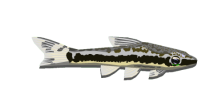Hey everyone,
I searched the forum, and couldn't find this info. I know it is VERY basic, but sorry I need it.
What is the species of the "Common" Bristlenose.
Thanks in advance,
Doran Figart
Ancistrus ID
-
livebearium
- Posts: 32
- Joined: 22 May 2005, 03:54
- My cats species list: 1 (i:0, k:0)
- Location 1: Vancouver, WA
- Interests: Plecos, livebearers, anabantoids
-
Mike_Noren
- Posts: 1395
- Joined: 25 Jul 2003, 21:40
- I've donated: $30.00!
- My articles: 1
- My images: 37
- My cats species list: 5 (i:0, k:0)
- Spotted: 9
- Location 1: Sweden
- Location 2: Sweden
- MatsP
- Posts: 21038
- Joined: 06 Oct 2004, 13:58
- My articles: 4
- My images: 28
- My cats species list: 117 (i:33, k:0)
- My aquaria list: 10 (i:8)
- My BLogs: 4 (i:0, p:164)
- Spotted: 187
- Location 1: North of Cambridge
- Location 2: England.
So, to answer the actual question: We don't really know what species it is... It's been so long since the original parents were imported to the hobby that the records of what it is (assuming it was even correctly identified at one point) has been completely lost in the mists of history...
Since there are PLENTY of brown Ancistrus with lighter brown spots, it's very difficult to determine what it is. Many of these are also quite poorly described (as in the description says something along the lines of "base brown with lighter spots, males have soft tentacles on snout, grows to 6 inches" - hardly good enough to identify one species from another).
There's plenty of good arguments for requesting a complete revision of the Ancistrus genera, but I doubt that will happen in the next few years.
--
Mats
Since there are PLENTY of brown Ancistrus with lighter brown spots, it's very difficult to determine what it is. Many of these are also quite poorly described (as in the description says something along the lines of "base brown with lighter spots, males have soft tentacles on snout, grows to 6 inches" - hardly good enough to identify one species from another).
There's plenty of good arguments for requesting a complete revision of the Ancistrus genera, but I doubt that will happen in the next few years.
--
Mats




